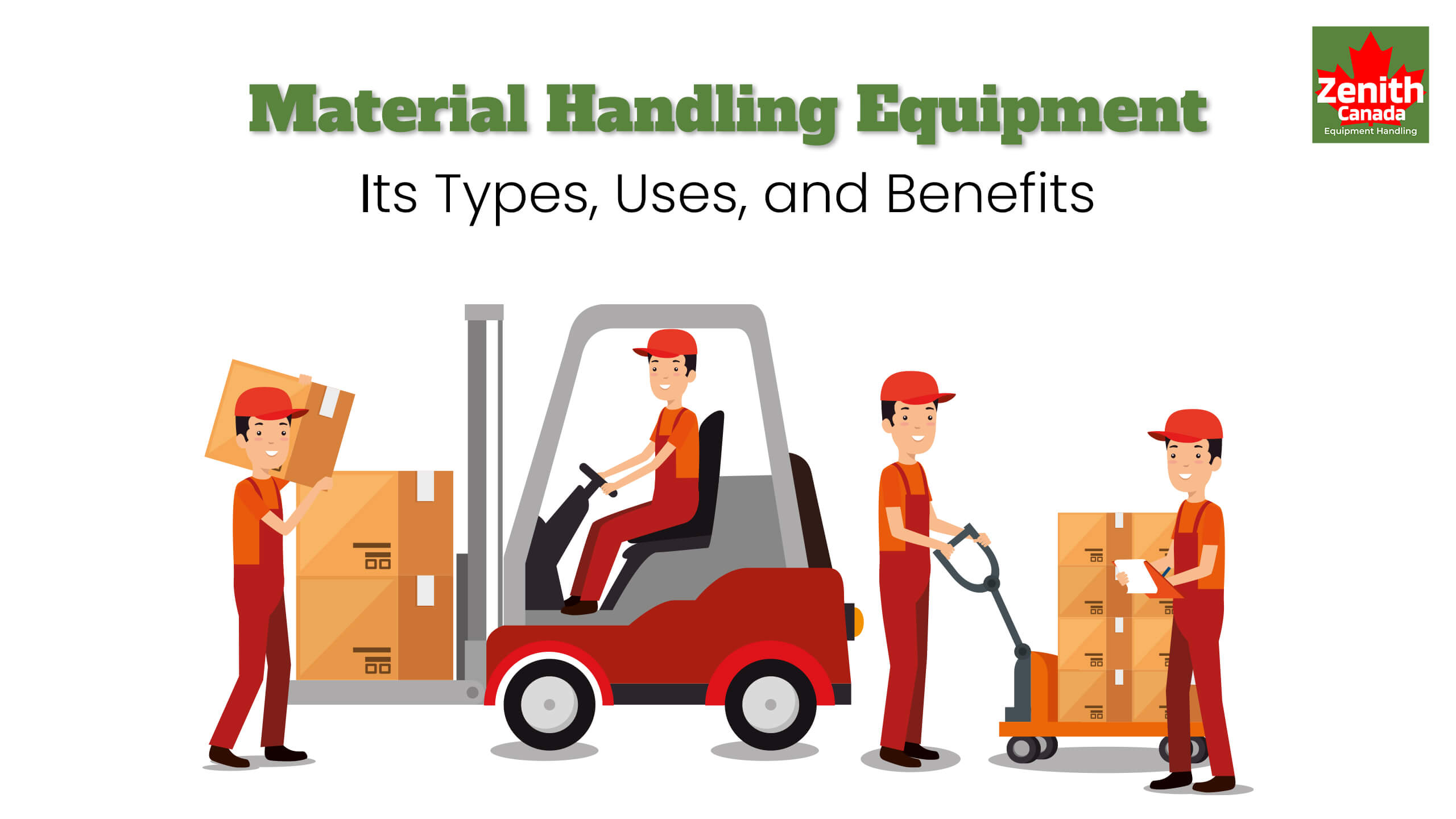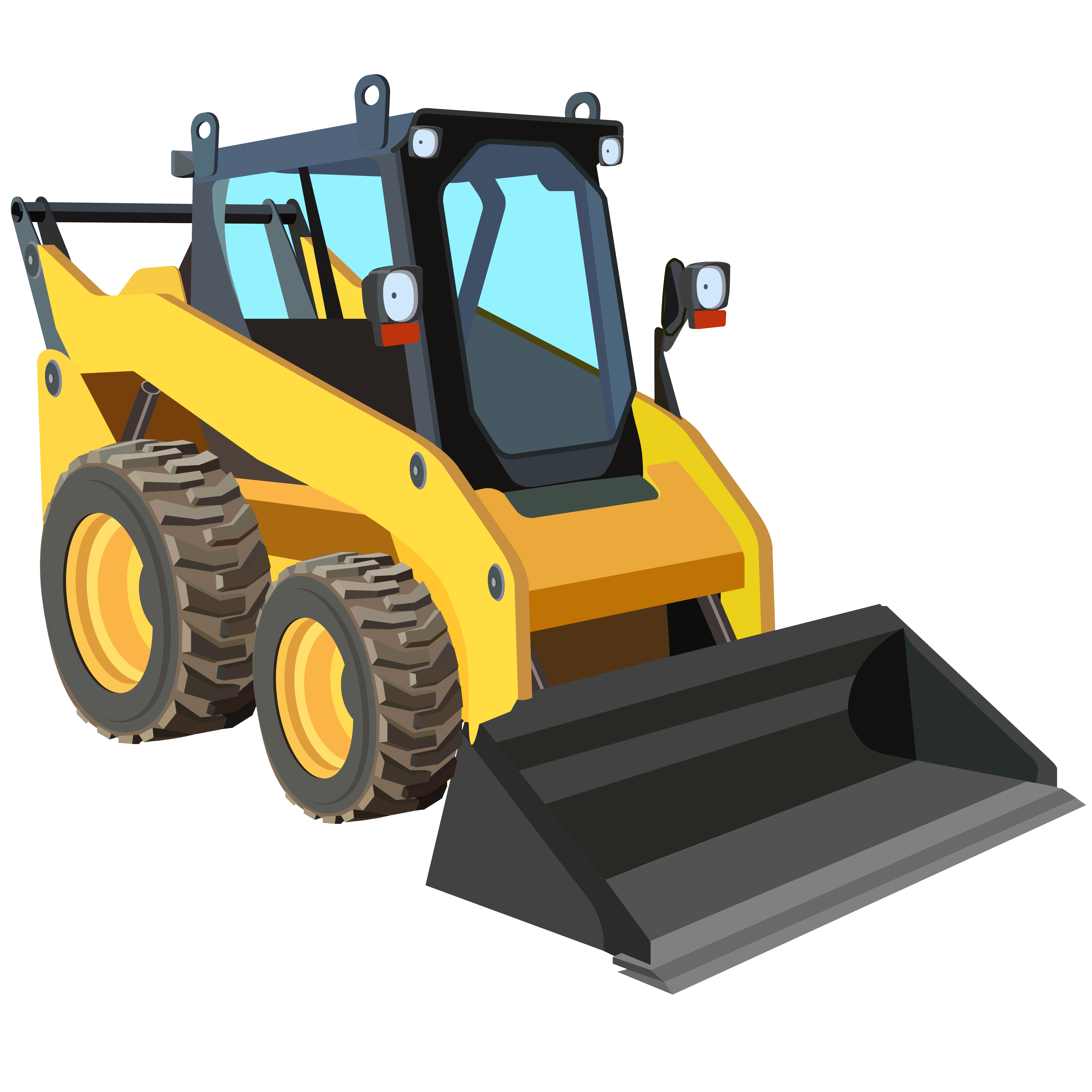Call or WhatsApp today for a free quote : +1 (416) 660-5054

Material Handling Equipment – Its Types, Uses, and Benefits
Warehouses are indeed the most active areas with constant movement. But because of that, they do not have to be scattered or labor-intensive. So, they need the right material handling equipment. This way, the productivity of the warehouse sector can be boosted considerably.
Besides, it may protect your employees from possible accidents. Other than that, they can help make the transportation of goods from one level to another more efficient. But what is material handling, and what exactly does it involve? We’re about to find out. This guide will discuss everything you’d want to know regarding material handling.
An Overview of Material Handling Equipment
MHE encompasses several machines and systems that move materials to safe storage. It deals with heavy equipment used in moving, storing, and controlling the flow of materials and finished products within a production area. So, it works great in almost all sectors. But, you can find this mostly in warehousing.
This is because it is where the products require protection, identification, access, and transportation. Material handling equipment is there to be used for the physical transfer and storage of materials within the warehouse. They come in different methods like manual, partially automatic, or fully automatic.
Four Types of Material Handling Equipment along with Their Uses
When it is about handling different materials, the material handling equipment is very important. There are basic types, each is there to address unique needs at the warehouse. They all aim at optimizing work efficiencies, reducing hazards, and increasing effectiveness in several operations.
1. Industrial Trucks
Industrial trucks are special vehicles that workers use to transport goods and other materials in warehouses. They are also great for loading and offloading such heavy materials. Several kinds of these trucks exist, each working in different ways.
Types of Industrial Trucks:
- Forklifts: They are perfect for handling loads within a limited area, to minimize spans.
- Hand Trucks: They are famous as dollies which typically have two-wheel trolleys for transporting stock on a narrow platform.
- Pallet Trucks: These trucks, are perfect for lifting and moving pallets.
- Side Loaders: They are great for use in areas where aisle space is limited. It can be there when workers load and unload goods from the side.
- Order Pickers: These machines transport operators with a view of enabling them to reach various products stored at elevated places.
2. Storage and Handling Equipment
The storage and handling equipment protects and stores products. It is ideal for products that are in transit and take time before they go to the next supply chain process. These tools can house many items for either short-term or long-term storage, depending on your warehouse’s container requirements.
Types of Storage and Handling Equipment:
- Shelves, Bins, and Drawers: They are especially suitable for arranging and storing smaller materials between the shelving.
- Mezzanines: Made of wood, steel, or fiberglass, they are built above a working surface to provide more storage space.
- Stacking Frames: Used to place and store many pallets and racks in one place.
- Pallet Racks: These steel structures, in relation to connectors and beams, provide a great way to store products.
3. Engineered Systems
Engineered systems are progressive technology applications involving robotic and computer frameworks for storing or moving goods. Such systems require separate software programs to operate. There are three broad categories, and they all have different roles.
Types of Engineered Systems:
- Autonomous Mobile Robots: These systems operate on their own without the help of any human being.
- Automated Storage and Retrieval Systems: They are there to crack the nut of storage and retrieval of goods.
- Automated Guided Vehicles: These systems can be used in cooperation with human beings. They perform transportation tasks mostly in an organized way within complex environments.
4. Bulk Material Handling Equipment
Bulk material handling equipment is conveyors. You can find it in warehouses for moving massive volumes of materials for storage or management. These materials include liquids and foods, substances and minerals like stones and rocks, and metals in the form of bolts and nails.
Types of Bulk Handling Equipment:
- Conveyor Belts: Belt and pulley systems, for example, systems that transfer material from one end to another.
- Stackers: Mobile equipment used for handling bulk materials for discharge positioning in a stockpile or storage area.
- Reclaimers: It refers to equipment bounded in pulling out material from stockpiles.
- Bucket Elevators: Equipment used in moving reasonably large quantities of bulk materials in the vertical plane.
- Hoppers: Broad-tipped systems that are used when flowing material has to be tipped into a container easily.
Advantages of Using Material Handling Equipment
- Enhances Employees’ Satisfaction
Since the use of material handling equipment decreases manual effort, tasks become easier and less likely to cause injuries. This results in improved job satisfaction since the employees suffer fewer injuries while at work. They can work in a comfortable environment.
- Prevents Workplace Accidents
Material handling equipment minimizes on occurrence of workplace accidents because most accidents originate from failure to handle goods correctly. This, in turn, leads to decreased accidents resulting from the handling of large loads or through the development of workplace injuries from repetitive tasks.
- Saves Money
Material handling equipment reduces the rate of employing workers, hence reducing operational costs. Also, employees’ absence from work due to injuries reduces the frequency of insurance claims, making it even more fitting.
- Better Organization in the Workplace and Increased Working Speed
Material handling equipment improves work efficiency by incorporating various operations. This means that goods can be moved with speed and accuracy since the systems are equipped with a wide capacity. They enable it to handle large workloads within short durations.
Choose the Right Type of Material Handling Equipment – Know Considerations
Selecting handling equipment requires considering some factors to enhance the efficiency of the material handling process. Check out some of the considerations.
- The Material Type
The type of material varies, and you need to pick what fits perfectly within your warehouse. For example, fragile or potentially hazardous materials need extra protection. In that case, utilizing equipment like protective containers or automated solutions is perfect.
- Space and Function
Think through the layout of your facility and how the systems will be used concerning the available space. In tight aisles, stock must fit, or the equipment must be narrow gauge, while large areas may accommodate mass handling equipment.
- Labor and Automation
Evaluate whether physical work is done in proportion to the use of technology. If automation is desirable, select equipment that does not require manual inputs.
- Main Requirements
Your equipment should address the main aspects of your business operations – be it storage, transport, or safety and compliance. So, pick whatever meets your specific requirements.

Key Takeaways
As a component of your warehouse operations, material handling equipment is much more than its transportation of goods. It offers a systematically structured procedure for managing and moving products from the production sector up to the distribution phase. At Zenith Canada, we offer premium material handling solutions to meet your unique needs, ensuring safety, efficiency, and productivity.

